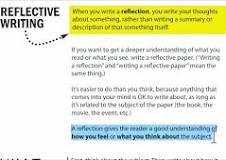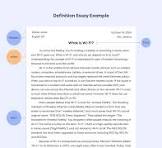The Art of Crafting a Critical Analysis Essay
When tasked with writing a critical analysis essay, one is presented with the opportunity to delve deep into a piece of literature, artwork, or any other subject matter to uncover its underlying meanings and implications. This form of academic writing requires a meticulous approach that goes beyond mere summarisation.
Understanding the Purpose
A critical analysis essay aims to evaluate and interpret a work of art or literature by examining its themes, characters, structure, and significance. It involves presenting an informed and well-reasoned critique that demonstrates a thorough understanding of the subject matter.
The Key Elements
When crafting a critical analysis essay, it is essential to:
- Analyse: Break down the subject into its constituent parts and examine how they contribute to the overall meaning.
- Evaluate: Assess the strengths and weaknesses of the work, considering factors such as coherence, originality, and effectiveness.
- Interpret: Offer your interpretation of the work based on evidence from the text or artwork itself.
- Synthesise: Bring together your analysis and evaluation to form a coherent argument that supports your thesis.
The Writing Process
Begin your critical analysis essay with an introduction that provides context for the work you are analysing and presents your thesis statement. In the body paragraphs, delve into specific aspects of the work while providing evidence to support your analysis. Finally, conclude by summarising your key points and reiterating your main argument.
Tips for Success
To excel in writing a critical analysis essay:
- Be Objective: Avoid personal biases and focus on presenting a balanced critique.
- Support Your Claims: Back up your arguments with evidence from the text or artwork.
- Cite Your Sources: Acknowledge any external sources you use in your analysis.
- Revise and Edit: Take time to review and refine your essay for clarity and coherence.
In conclusion, mastering the art of crafting a critical analysis essay requires attention to detail, analytical skills, and a willingness to engage deeply with the subject matter. By following these guidelines and honing your critical thinking abilities, you can produce insightful essays that offer valuable perspectives on works of art and literature.
Frequently Asked Questions on Writing a Critical Analysis Essay
- What are the 4 parts of a critical analysis?
- What is critical analysis and example?
- What are the four parts of a critical analysis?
- How do you write critically at level 7?
- How do you write a critical analysis for an essay?
- What is an example of a critical analysis?
- What is critical analysis?
- What is a critical essay example?
What are the 4 parts of a critical analysis?
In a critical analysis essay, the process typically involves four key parts that form the foundation of a thorough evaluation: analysis, evaluation, interpretation, and synthesis. Firstly, the analysis stage requires breaking down the subject matter into its fundamental components to understand how they contribute to the overall meaning. Following this, the evaluation phase involves critically assessing the strengths and weaknesses of the work based on criteria such as coherence and effectiveness. Subsequently, interpretation entails offering personal insights and perspectives on the work supported by evidence from the text or artwork itself. Finally, synthesis brings together all elements of analysis and evaluation into a cohesive argument that supports the overarching thesis of the critical analysis essay. Each part plays a crucial role in crafting a comprehensive and insightful critique of the subject at hand.
What is critical analysis and example?
Critical analysis involves examining a piece of literature, artwork, or any subject matter in depth to evaluate its components and underlying meanings. It requires a thoughtful and analytical approach to interpret the significance of the work. For example, in a critical analysis of a novel, one might explore the themes, character development, narrative structure, and symbolism to uncover the author’s intended message and literary techniques. By critically analysing the text, readers can gain a deeper understanding of its complexities and appreciate the nuances that contribute to its overall impact.
What are the four parts of a critical analysis?
In a critical analysis essay, the four essential parts that form the backbone of the analysis process include analysis, evaluation, interpretation, and synthesis. Firstly, analysis involves breaking down the subject matter into its fundamental components to understand how they contribute to the overall meaning. Evaluation requires assessing the strengths and weaknesses of the work based on criteria such as coherence and effectiveness. Interpretation entails offering personal insights and perspectives on the work supported by evidence. Finally, synthesis involves bringing together all aspects of analysis and evaluation to construct a cohesive argument that supports the main thesis of the critical analysis essay.
How do you write critically at level 7?
When aiming to write critically at level 7, it is crucial to demonstrate a high level of analytical depth and sophistication in your approach. At this advanced level, your critical analysis should go beyond surface-level observations and delve into the complexities of the subject matter. To achieve this, it is essential to engage with multiple perspectives, consider the broader implications of your arguments, and present a well-reasoned evaluation supported by evidence. Additionally, showcasing original insights, demonstrating a nuanced understanding of the context, and maintaining a clear and coherent structure are key components of writing critically at level 7. By honing these skills and adopting a rigorous analytical framework, you can produce work that reflects a mastery of critical thinking at the highest academic level.
How do you write a critical analysis for an essay?
When approaching the task of writing a critical analysis for an essay, it is essential to begin by thoroughly understanding the subject matter being analysed. Start by carefully reading the essay or literary work multiple times to grasp its nuances and underlying themes. Next, identify the key elements such as the author’s main arguments, literary devices used, and the overall structure of the piece. Then, critically evaluate these components by considering their effectiveness, relevance, and impact on the work as a whole. Support your analysis with evidence from the text itself to strengthen your argument and provide a well-rounded critique. Finally, craft a well-structured essay that presents your analysis in a clear and coherent manner, ensuring that your interpretation is backed up by sound reasoning and supported by relevant examples from the text.
What is an example of a critical analysis?
A common query regarding critical analysis essays is, “What is an example of a critical analysis?” An example of a critical analysis could involve examining a classic novel such as George Orwell’s “1984.” In this case, a critical analysis would delve into the themes of surveillance, government control, and individual freedom present in the novel. The essay would evaluate how Orwell uses literary devices, character development, and plot structure to convey his message about the dangers of totalitarianism. By dissecting the text and offering a thoughtful critique supported by evidence from the novel itself, a comprehensive example of a critical analysis can be crafted to showcase analytical skills and insights into the deeper layers of a work.
What is critical analysis?
In the realm of academic writing, the question “What is critical analysis?” often arises as individuals seek to grasp the essence of this analytical approach. Critical analysis involves a methodical examination and evaluation of a subject matter, be it a piece of literature, artwork, or any other form of expression. It goes beyond surface-level observation, requiring a deep dive into the underlying themes, structures, and implications of the work at hand. Through critical analysis, one aims to uncover nuances, contradictions, and complexities that may not be immediately apparent, thereby shedding light on the deeper layers of meaning within the subject being scrutinised.
What is a critical essay example?
A critical essay example serves as a demonstration of how to apply the principles of critical analysis to a specific work or subject. In such an example, a writer would meticulously examine a piece of literature, artwork, or any other content, highlighting its strengths and weaknesses, interpreting its themes and messages, and offering a nuanced critique based on evidence from the text or artwork itself. By studying a well-crafted critical essay example, individuals can gain insight into the analytical process and learn how to construct their own thoughtful and informed analyses of various works.




